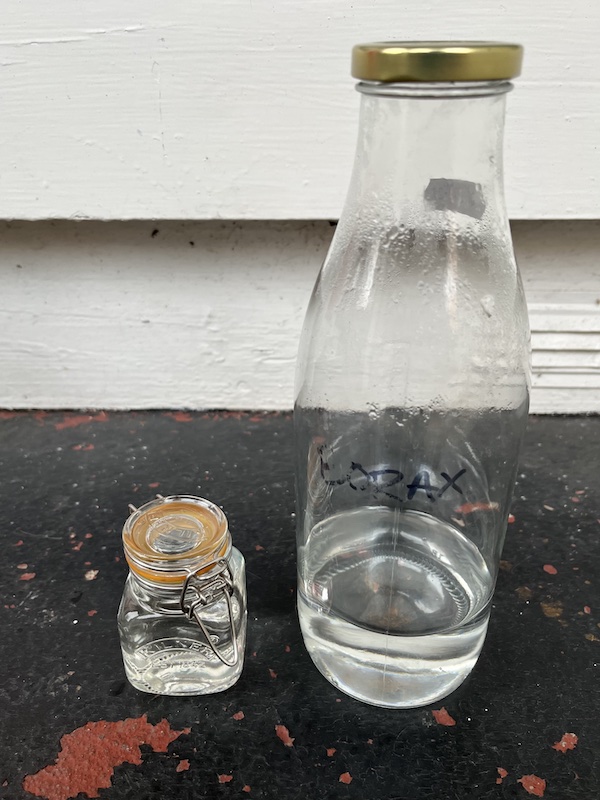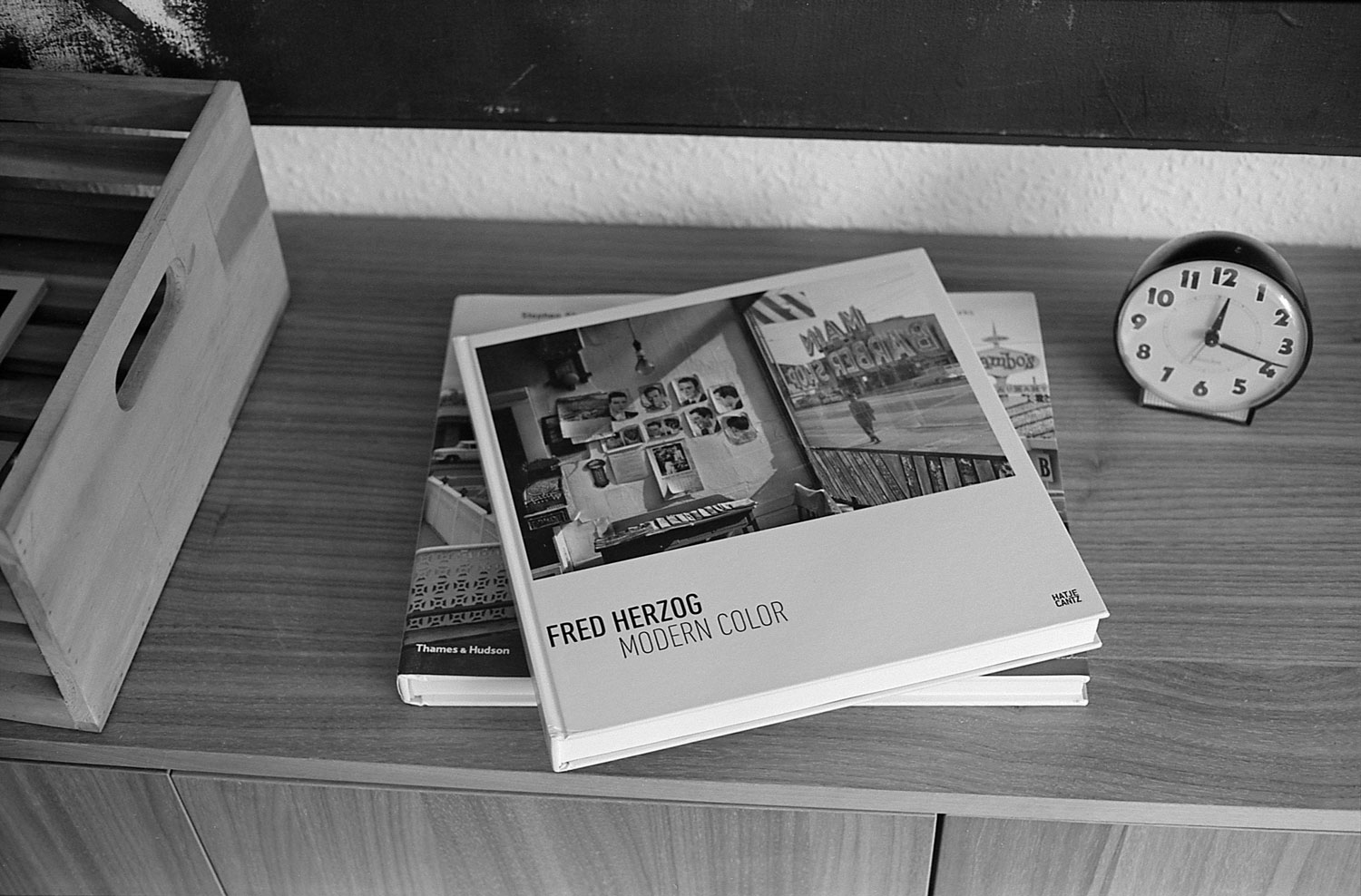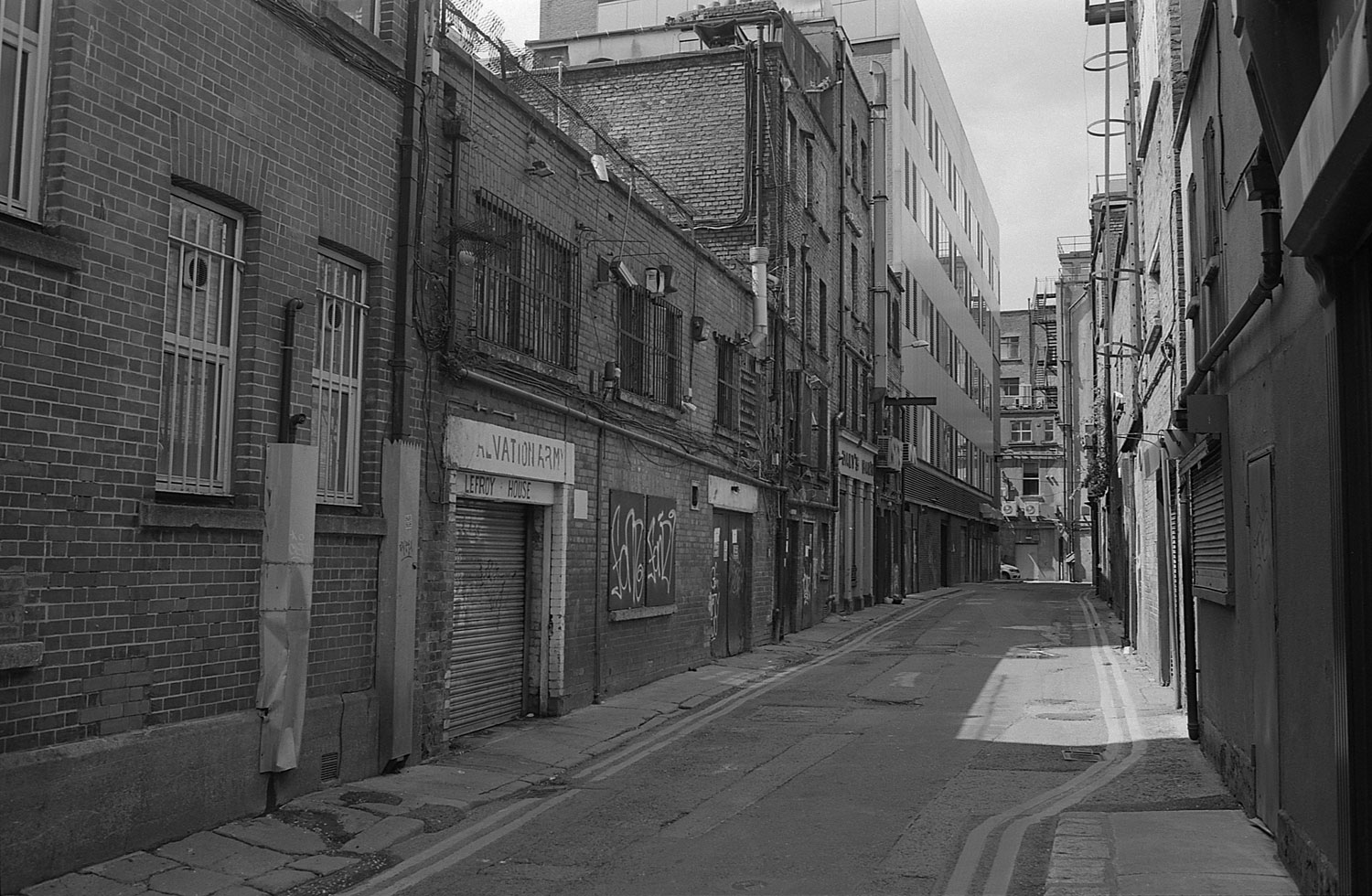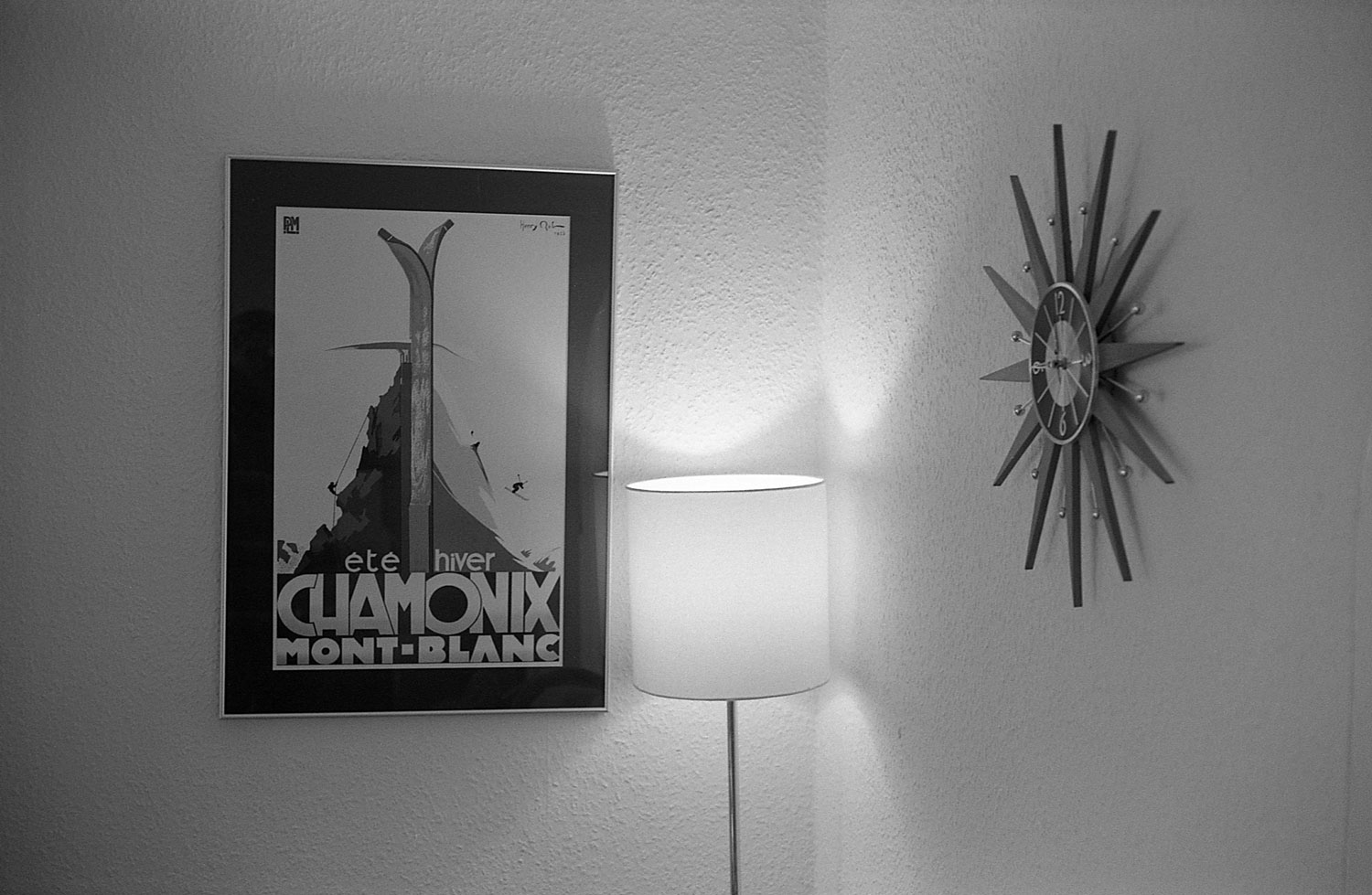What follows is how I formulated a very nice developer that I have now used pretty much exclusively for the last year and a half. As it says in the title, I have called it “PC-512 Borax”. Creative name? No. But it is indicative of the formula.
This nice developer is a secondary result of some experimentation I was doing on two bath developers. But the results stand on their own as quite a decent developer.
How I Developed It
I was working on two bath developers for awhile. My first attempt, which is very good with various films, is documented in my post about it last year. But I had set out to make a phenidone/ascorbic acid (Vitamin C) developer so that I could get away from hydroquinone which is harder and more expensive to get in Europe. I don’t yet have one that I am really happy with and it may not be very feasible since it appears that carryover to bath B will be the main issue. Ascorbic acid is too good a preservative.
While experimenting I kept having to mix up solutions containing phenidone. It’s annoying to measure because it’s so light weight that it gets all over the place, and getting very precise amounts is hard. I had previously experimented with Patrick Gainer’s PC-Glycol and had propylene glycol around. So I, at first, mixed up a 2.5% solution in propylene glycol to make it easier to measure.
Then I got tired of measuring and stirring in ascorbic acid. So I made up a solution with both phenidone and ascorbic acid. This is along the lines of PC-Glycol but with a very different concentration and ratio. Through a lot of experimentation I had settled on a ratio of 24:1 ascorbic acid to phenidone. In 100ml of propylene glycol I have 0.5g of phenidone and 12g of ascorbic acid. Essentially this is double the phenidone of PC-Glycol and 20% more ascorbic acid.
What about the borax? Well, I experimented with a number of alkali for two bath developers, including sodium carbonate in Gainer’s developer, and sodium bicarbonate and potassium phosphate in two baths. But after a lot of experimentation I found the grain produced with borax to be much finer and nicer in appearance. Keeping the pH down helps restrain grain, but there appears to be something unique about borax and borates that is not a result of pH. This is debated by some, but in my experience is true.
So, while messing with two baths, I thought what about if I just try the developer concentrate with borax in a single bath? That’s this developer: PC-512 Borax.
Other people have experimented along these lines and some have published previous developers. I think that this one is still a bit unique and having come to its formulation on my own, I thought I would share it with the world in case it is useful to others.
Some of the developers in this family that may be of interest:
- Kodak’s pioneering XTOL
- ADOX XT-3 and Fomadon Excel clones of XTOL
- Gainer’s PC-Glycol
- Mark Overton’s Mocon
- Instant MyTol
- Erik Prestmo’s XTOL clone
- Many others
What is It?
The developer is just 4 ingredients: phenidone, ascorbic acid, propylene glycol, and borax. No sulfite! I keep it as two stock solutions:
- A concentrate of developing agents in propylene glycol.
- A second solution of borax in water. If you don’t want to keep this around, you can also mix it up from powder for each film.
The reason the developing agents need to be in propylene glycol is because of the dreaded Fenton reaction where any errant copper or iron can cause ascorbic acid to rapidly oxidize. These impurities are common in water, and water also dissolves oxygen. You can use various chelating agents to capture them, but Gainer’s glycol solution is a good one, and simple. The glycol concentrate means a long life, easy storage, and easy measurement when it’s time to use it. Mark Overton has shown that freezing the glycol solution should make it viable for many years. I have found that it keeps for over a year just fine at room temperature, with a small amount of oxidation.
I use it one-shot, like I would Rodinal.

Mixing the Formulation
The pH of this developer, mixed, is about 8.3.
Concentrate A (100ml)
- 80ml Propylene glycol heated to 80C or so
- Add 12g ascorbic acid powder in small amounts, while stirring
- Stir, reheat, and repeat until it’s all dissolved
- This can take 15-20 minutes of stirring by hand
- Add 0.5g Phenidone and stir and reheat until dissolved
- Top off with cold propylene glycol to 100ml
Note: Do not get the glycol over 100C, it starts to alter chemically, possibly oxidizing. Also, Be aware that it is quite hot and does not run off like water when spilled. Be careful. Stir in a glass or stainless container that has plenty of extra space.
Solution B (1 liter)
- Water to 800ml at room temperature
- 21.7g Borax stirred or shaken until dissolved
- Water to 1L
Bath B will last 2-4 rolls depending on how much you use in your canister. You can readily mix up more. 20 Mule Team borax from the grocery store in the US will work. Obviously any purer supply is also good. Getting ahold of borax in Europe is more difficult.
Using It
You simply mix 1:50 developing agent solution to borax solution. So for about 300ml of developing solution in my canister for a single 35mm film, I use 6ml of developing agent concentrate and 300ml of borax solution.
After first mixing this up a year and a half ago, I started to use it for almost everything. The look of Delta 100 in this developer is just outstanding in my opinion. With that film, it’s definitely as good as most other developers I’ve used and better than all the other homebrews I’ve tried so far.
I like that it stores well and I can just mix it up when I want it. Mixing the borax solution is easy and takes only a couple of minutes.
Recommended Times
I have currently only tested the developer with a few films, and recommend the following times for those films:
- Ilford Delta 100 @100 — 6.75 mins at 20C (Dmax 2.24, Dmin 0.32)
- Fotoimpex CHM100, Agfa APX-100 (new), Kentmere 100 @100 — 6.5 mins at 20C (Dmax 2.25, Dmin 0.3)
- Kodak Tri-X 400 @400 — 6.75 mins at 20C
- Ilford HP5+ 400 @200 — 8 mins at 20C
You will, obviously want to adjust those times to your own experience and density requirements. Those work well for me. Base plus fog (Dmin) is slightly higher than for XTOL, but prints nicely. If you are worried about that you could experiment with restrainers. I am not going to bother, this is good for me.
What Does it Look Like?
It’s a reasonably contrasty developer with short development times. It has pretty smooth grain—smoother than I would expect for a sulfite-free developer. This is, I think, because the pH is pretty low, there is a fair amount of ascorbic acid (Vitamin C) present, and borax and propylene glycol form some compounds that may have a solvent effect here as well. It is surmised that ascorbic acid has a solvent effect as well. Grain looks, to my eye, not that different from D-76 stock, which is a highly solvent developer. The tonality is more like XTOL, a developer I have used a lot and like.
Sample Shots
All of the following were shot on 35mm film.
Ilford Delta 100 at EI100: Leica M2 with Summarit-M 2.5/35mm

Ilford Delta 100 at EI100: Yashica Electro 35 GSN with Color-Yashinon 1.7/45mm

Ilford Delta 100 at EI100: Leica M2 with Summarit-M 2.5/35mm

Fotomimpex CHM100 at EI100: Yashica Electro 35 GSN with Color-Yashinon 1.7/45mm

Kodak Tri-X 400 at EI400: Rollei 35S with Rollei Sonnar 2.8/40mm

Notes
After first publishing this, I was informed of another similar developer and an experiment in this direction. If you want to look further, you might find these of interest:

